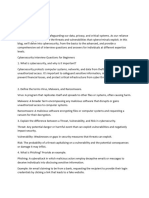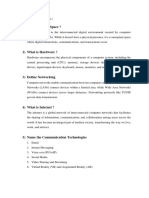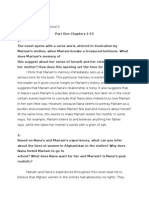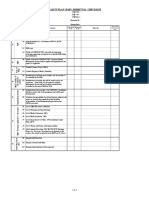0% found this document useful (0 votes)
25 views16 pagesPS Solution
The document provides a comprehensive overview of Cyber Security, including definitions, types of cybercrime, software attacks, and layers of security. It discusses the CIA Triad, cyber terrorism, cyber warfare, and the role of international laws in regulating cyber activities. Additionally, it covers legal aspects such as copyright and patent laws, the Information Technology Act 2000, and the importance of digital signatures and certifying authorities.
Uploaded by
gathalalgara000Copyright
© © All Rights Reserved
We take content rights seriously. If you suspect this is your content, claim it here.
Available Formats
Download as DOCX, PDF, TXT or read online on Scribd
0% found this document useful (0 votes)
25 views16 pagesPS Solution
The document provides a comprehensive overview of Cyber Security, including definitions, types of cybercrime, software attacks, and layers of security. It discusses the CIA Triad, cyber terrorism, cyber warfare, and the role of international laws in regulating cyber activities. Additionally, it covers legal aspects such as copyright and patent laws, the Information Technology Act 2000, and the importance of digital signatures and certifying authorities.
Uploaded by
gathalalgara000Copyright
© © All Rights Reserved
We take content rights seriously. If you suspect this is your content, claim it here.
Available Formats
Download as DOCX, PDF, TXT or read online on Scribd
/ 16






















































































